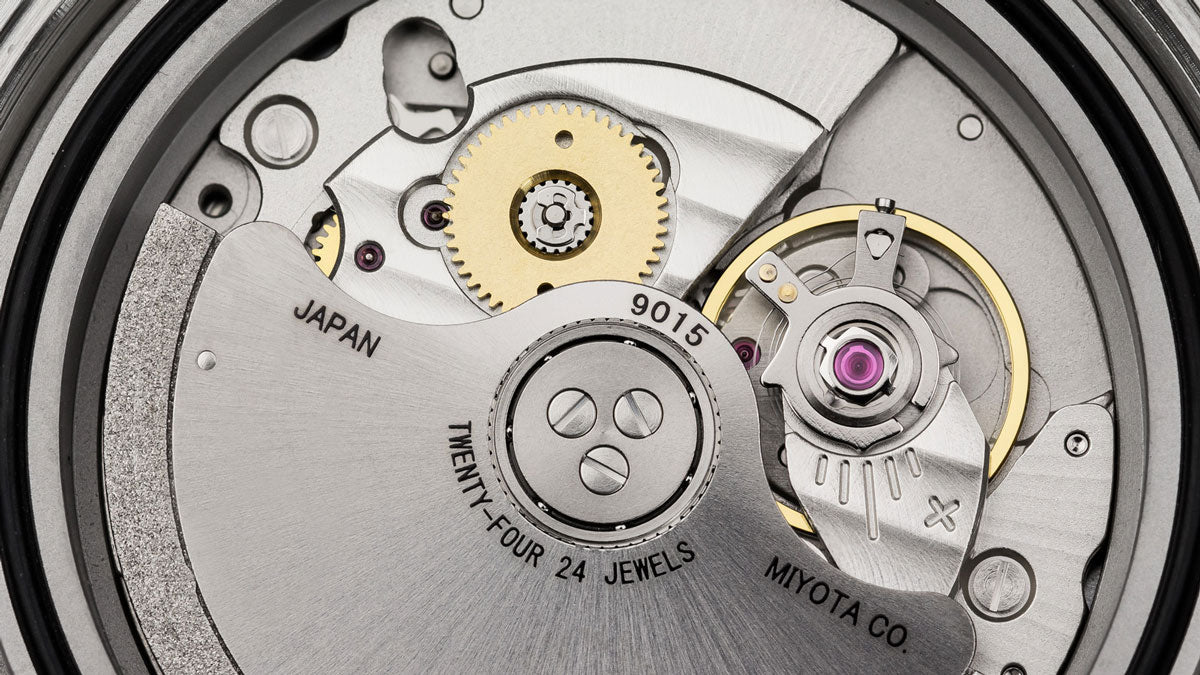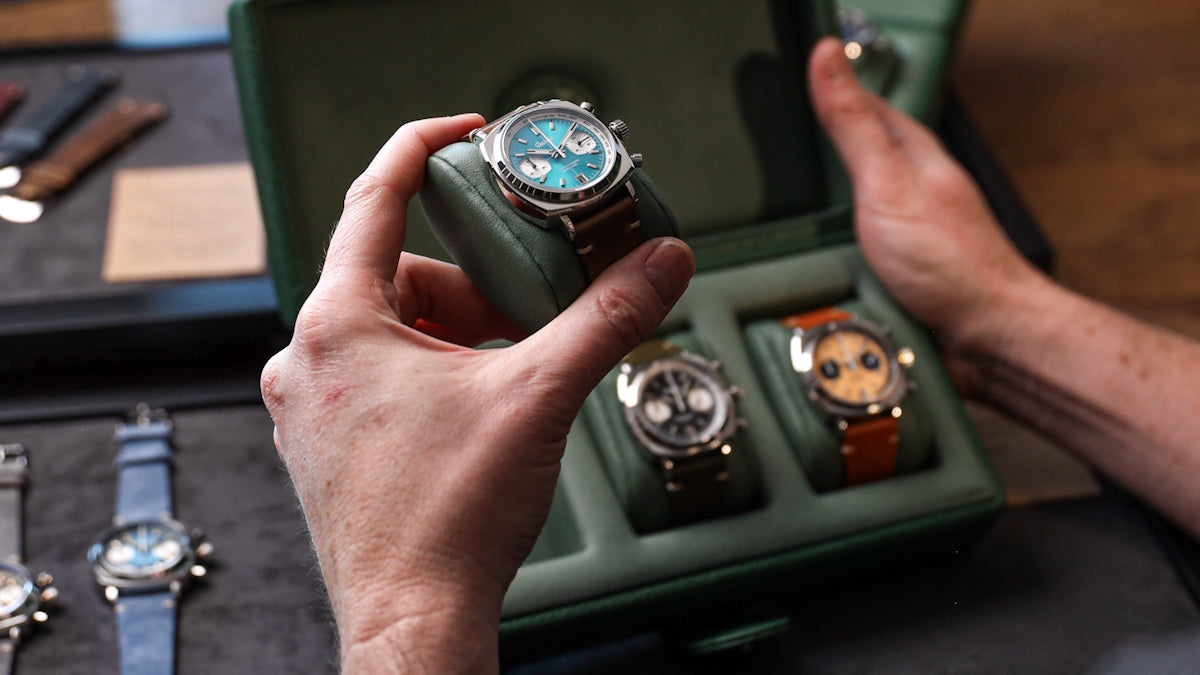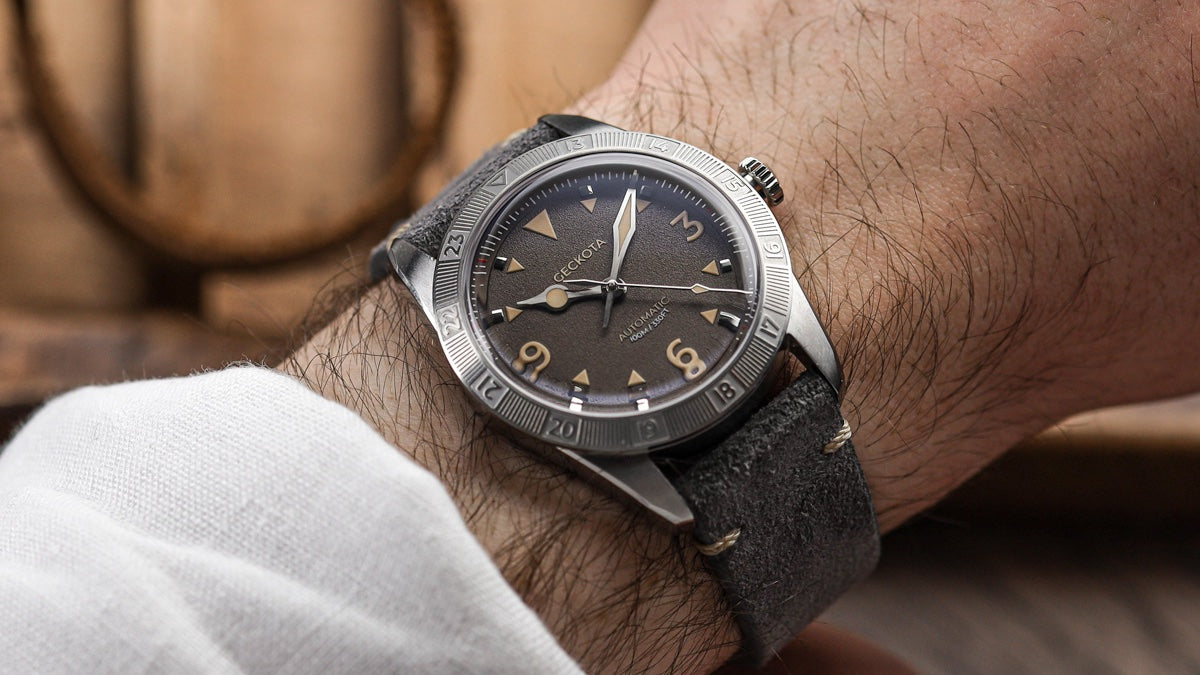
June 03, 2025 3 min read
When it comes to high-quality, affordable automatic movements, Miyota, which is a division of the Citizen Group, offers some of the most popular options for small watch brands and enthusiasts. Among their most well-known calibers are the Miyota 9015 and Miyota 9039. While these two movements are mechanically similar, they each serve distinct purposes in modern watchmaking.
In this article, we’ll break down the differences between the 9015 and 9039 - and also briefly compare them to the Seiko NH35, another popular Japanese movement - to help you choose the right one for your next timepiece.
Introduced in 2009, the Miyota 9015 has become a go-to movement for automatic watches that aim to offer high-beat accuracy, reliability, and cost-efficiency.
Its slim profile (3.9 mm thick) and robust construction have made it a favorite among microbrands producing dive watches, field watches, and dress watches.

The Miyota 9039 is essentially a no-date version of the 9015, introduced to cater to the demand for clean, symmetrical dial layouts and watches without a date complication.
By removing the date function, the 9039 allows for simpler dials and eliminates the need for a phantom date position on the crown. This movement is used in the Ocean-Scout diver's watch.
The Seiko NH35 is another widely used Japanese automatic movement. It is available at a lower cost than both the 9015 and 9039, however it features a lower beat rate and thicker profile, which can affect watch case design.
The NH35 is known for its reliability and ease of servicing, making it a go-to for entry-level and tool watches. However, those looking for a thinner profile and smoother seconds hand may prefer the Miyota 9000 series.
| Feature | Miyota 9015 | Miyota 9039 | Seiko NH35 |
|---|---|---|---|
| Jewels | 24 | 24 | 24 |
| Frequency | 28,800 vph | 28,800 vph | 21,600 vph |
| Power Reserve | ~42 hours | ~42 hours | ~41 hours |
| Thickness | 3.9 mm | 3.9 mm | 5.32 mm |
| Date Function | Yes | No | Yes |
| Hacking | Yes | Yes | Yes |
| Hand-Winding | Yes | Yes | Yes |
| Phantom Date Position | Yes (if removed) | No | Yes (if removed) |
Both the Miyota 9015 and 9039 represent outstanding value and performance for automatic watch movements, particularly for slim, high-beat designs. Meanwhile, the Seiko NH35 remains a reliable and economical alternative for everyday and tool watches. Whether you’re a collector, enthusiast, or watch brand, choosing between them depends mostly on your design preference - not mechanical compromise.

October 30, 2025 2 min read
Read More
October 04, 2025 3 min read
Read More
October 02, 2025 3 min read
Read More
About the Author: Jon Quinn
About the Author: Jon Quinn
I’m Jonathan Quinn, founder and owner of Geckota. What excites me is what excited me when I started the business – offering high-quality watches and straps that I couldn’t find elsewhere, and seeing the pleasure they give our customers around the world.
More Articles by Jon Quinn